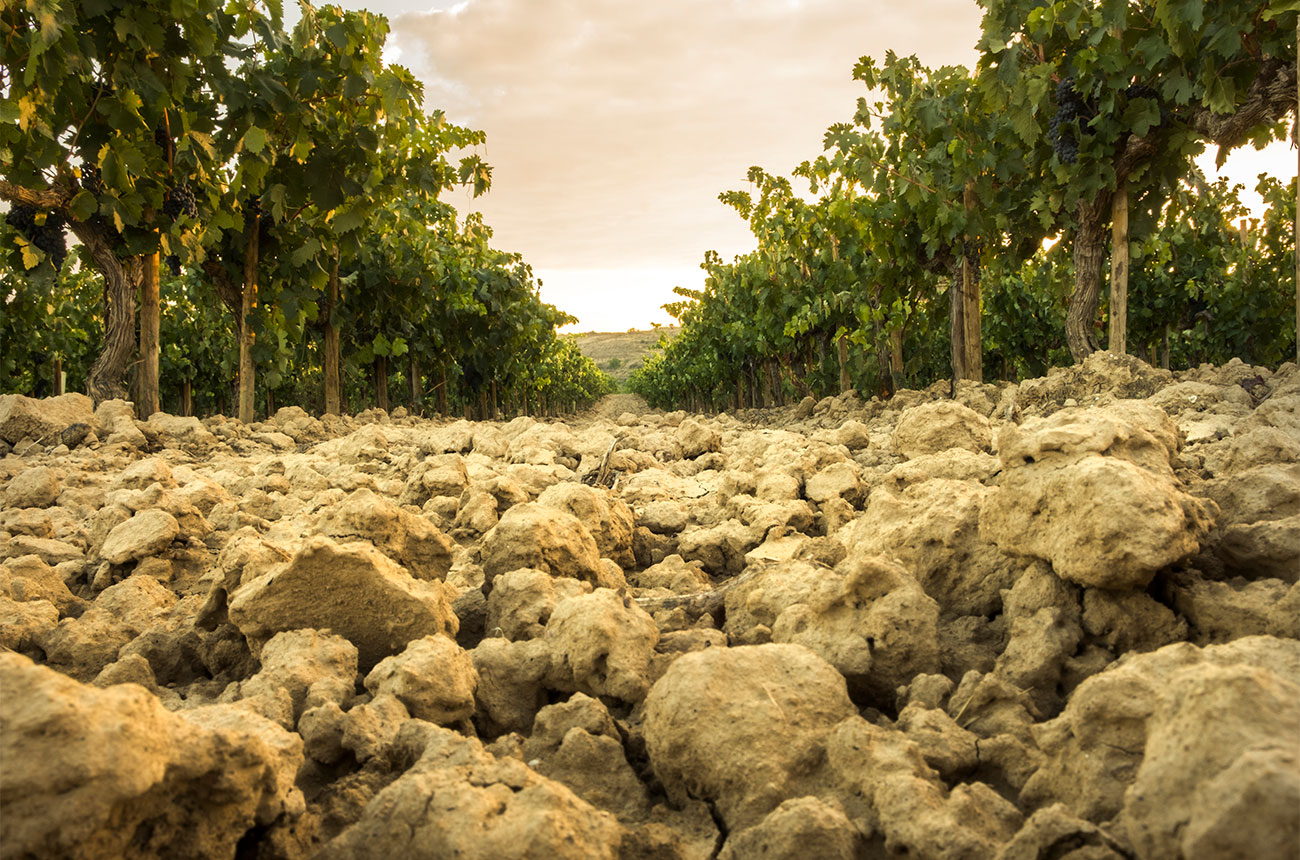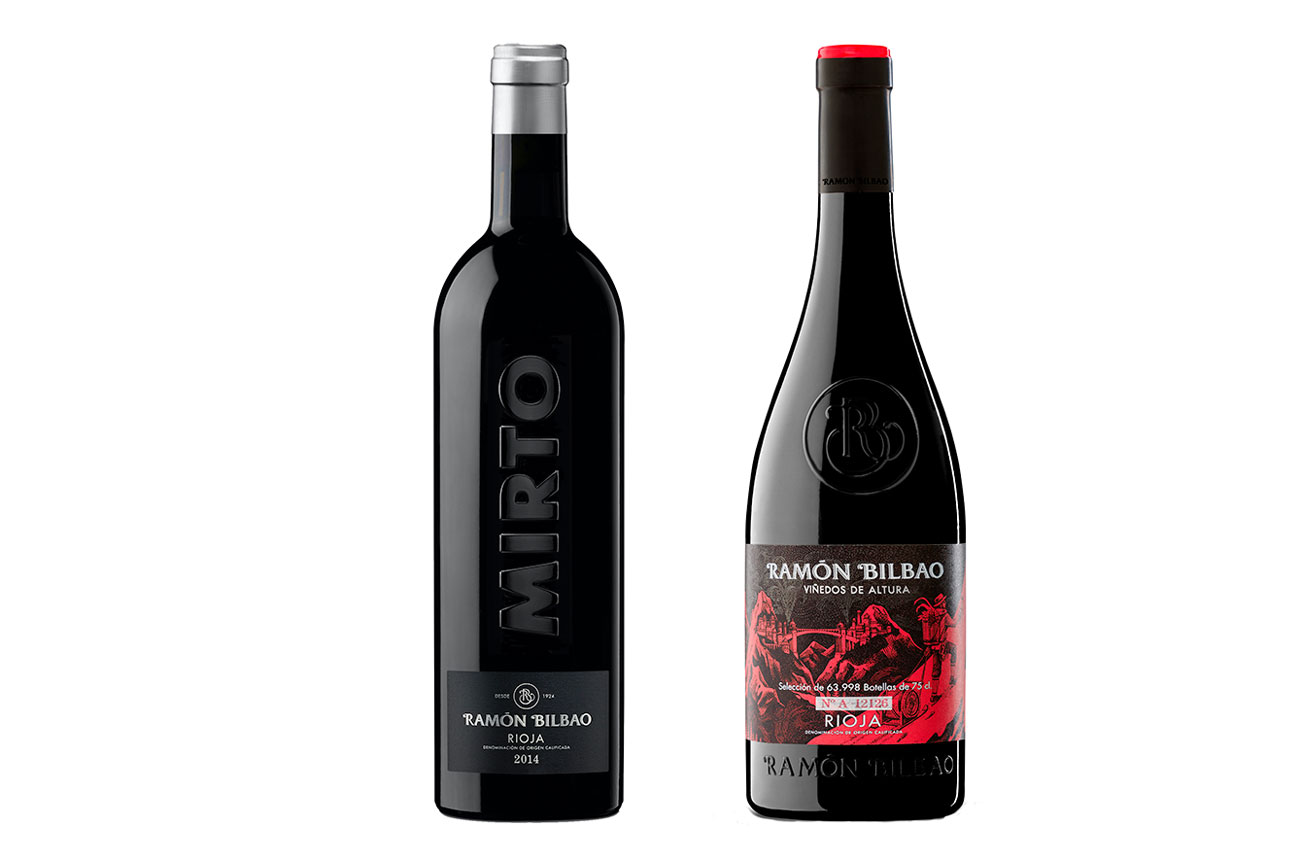From winter-snow-capped Sierra de Cantabria in the northwest to warm, Mediterranean lowlands in the southeast, Rioja is a large and diverse landscape with wide differences, along its 100km length, in climate, altitude, aspect, soils and geology.
For almost all of its long winemaking history, Rioja’s touchstone was that of a negociant-led business model, making multi-zone, multi-grower, multi-cultivar blended wines. Wines are matured for varying lengths of time in oak barriques according to a quality hierarchy, from crianza, to reserva, then gran reserva.
This traditional approach remains the mainstay of Rioja wine. Viticultural and winemaking innovation has changed none of this. But what is also happening, alongside these traditional styles, is a growing interest to highlight terroir, to express, in vinous form, attributes of specific sites. We’ve seen this happening in New World countries, to develop points of differentiation from grape variety labelled wines, where ‘single vineyard’ wines have proliferated in the last 20 years. Everyone can grow Shiraz, but no-one can replicate your Shiraz, from your plot of land.

Terroir expression
Rioja is fundamentally red wine. Tempranillo is the cornerstone of Rioja, which occupies 80% of the total vineyard area. Garnacha, Mazuelo and Graciano combine to create a vineyard area that is 91% red.
It is well known that the style of different grapes varies according to the vast array of different sites. For sure, Garnacha needs plenty of warmth to grow and ripen, so it is found mostly in Rioja Oriental, with its warm, sunny Mediterranean climate, and lower elevation, around 300m. But Tempranillo is widespread: at the north and west end of the region, Rioja Alavesa is broadly slightly higher and cooler than Rioja Alta, with vineyards up to about 800m elevation. Higher diurnal temperature variation at altitude slows grape ripening, retaining more natural grape acids and fruit aromatics. High enough elevation can also increase colour and tannin richness, as thicker skins develop to compensate for the greater light intensity. The exception in Oriental is high-altitude Monte Yerga.
Another aspect of terroir expression highlighted by recent research has demonstrated that vineyard microbes are part of the composition of regional and local yeast populations, and that they play a role in terroir expression – that ‘sense of place’, that inimitable sense of uniqueness, that high quality wines can express. Over time, producers have been able to exclude species, strains with detrimental effects, leaving them with a lab-cultured (reliable, consistent) selection of regional yeasts which confer positive expressions of a particular terroir (uniqueness, flavour, texture, complexity).
While a few producers have been making site-specific Rioja for decades, the strengthening current of top quality-oriented innovation in Rioja has become something akin to the Penfold’s Grange (multi-vineyard, multi-region blend, mainly Shiraz) and Henschke’s Hill of Grace (single-vineyard, single variety – Shiraz,) argument. We know full well both Aussie wines have their individual iconic places.
In Rioja, the ‘terroir-ist’ groundswell has grown enough that the appellation regulations have recently been updated to allow ‘village’ wines and ‘singular vineyard’ wines. They might be blends. They might be single variety wines.
In the first year of viñedos singular designation, 84 applications were approved, covering a total of 155 ha (less than a quarter of 1% of the total Rioja vineyard). Strict rules include minimum vine age of 35 years, manual harvest, lower yield than for other designations, and all fruit originating from the named vineyard. Nearly 90% of singular vineyard wines are from Alavesa and Alta, which together comprise about 60% of the total vineyard area.

Innovation in the winery
These new designations complement, and run alongside traditional ageing categories. This means wines can be aged traditionally (crianza, reserva, gran reserva), or however the producer prefers. This may include proportions of new French oak for vanilla and clove flavour, and tannin evolution. It also includes, as elsewhere around the world, a return to more neutral concrete fermentation and storage vats, to focus expression more towards fruit flavours.
Across the wine world 20th century vats were typically large, and lined with an inert material, such as epoxy resin or glass tiles, to protect the wine. Concrete vats of the 21st century are usually smaller, originally egg-shaped, and typically lined with a tartaric acid wash to prevent chemicals leaching from the concrete into the wine. These vats offer some of the oxygen permeability of oak, but without any of the flavour of new oak.
The result is that novel wine expressions are being made, still following Rioja law, and with labelling information for consumers who are interested to experiment. A label may state different geographically-delimited units: zones (Alavesa, Alta, Oriental); or villages (eg Laguardia, San Vicente de la Sonsierra, Alfaro); or singular vineyard (viñedos singular). Additionally, consumers can identify other innovations on the label: wine coming from fruit, of which 90%+ is harvested from vineyards above 550m elevation (viñedos de altura); and wines made using concrete or clay – earthenware, terracotta, amphora – (hormigón, tinajas de barro).
Spanish Wine Academy from Ramón Bilbao
A note from our sponsor

Bodegas Ramón Bilbao is one of the most prestigious wine brands in Spain and a key reference in Rioja winemaking. Ramón Bilbao believes in an unconventional spirit, which brings innovation through a unique personal view of the terroir, setting the trend by producing singular wines which are also profoundly in touch with their environment.
The winery has taken a great step towards innovation, with many studies based on winemaking materials such as concrete or clay, the effect of altitude on wine, and functional practices and technologies such as satellite oenological stations that provide exact data on the maturation of each vine, the use of pheromones to manage moths (disruption of mating), trichoderma that colonise wood, avoiding fungal wood disease, or the better known practice of selected native yeasts to enhance the expression of flavours in wines.
Analysing and understanding each terroir in detail means Ramón Bilbao can communicate the character of its vineyards directly to the consumer, resulting in special wines such as Ramón Bilbao Viñedos Altura (a Tempranillo-Garnacha blend) and Ramón Bilbao Mirto.








